Transform Your Cardboard Boxes into Awesome DIY Costumes
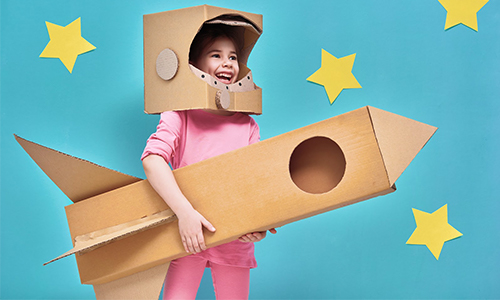
Suggested Ages: 6+
Stuck indoors and looking for something fun to create? Spark your kid’s sense of adventure and make cardboard costumes! With some basic supplies, a few sturdy boxes, and some techniques for shaping them in creative ways, your kids can turn their visions into wearable realities.
Fortunately, even if you don’t have a crafty bone in your body, there is one magical material we love as a starting point for any costume—and you don’t have to be a DIY expert to use it. We’re talking about corrugated cardboard (yup, just the regular kind boxes are made of), and you’d be surprised how many ways you can make it look amazing.
Read on for some tips from the Galileo team on techniques for transforming your old cardboard boxes into some seriously impressive costumes.
Why We Love Cardboard for Costumes
- It’s plentiful. Most of us have a few (or many) boxes lying around the house at any given time.
- It’s recycled and recyclable. It’s easy and earth-friendly to drop your cardboard costume in the recycling bin once you’ve worn it (unless it’s so awesome you want to wear it again).
How to Shape Cardboard for Costumes
Make straight-sided shapes
For straight-line cuts, use the natural corrugations of your cardboard as guidelines for keeping your cuts straight (it’s also easier to cut between corrugations, as the cardboard is thinnest there). If you’re cutting a rectangle—even if you incorporate a corner of piece of your cardboard to do it—you’ll still need to cut at least one side across the corrugations. In that case, it’s easiest to orient your shape so you cut the longest sides along the corrugations and the shortest side(s) across them.
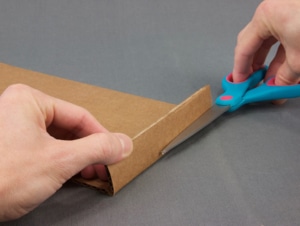
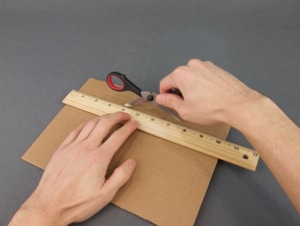
Make 3D shapes
Make hats, crowns, robot arms, thick bracelets and more by bending your straight-sided shapes into round or straight-sided (rectangular, triangular, etc.) tubes. For bending, as with cutting, it’s always easiest along the corrugations. If your cardboard is too thick to fold cleanly, use a box cutter or sharp blade to score (cut just halfway through) a line along the corrugations before you fold it. Score and bend only at the corners of your straight-sided forms, or at more regular intervals to create forms with smoother curves.
Make more intricate 2D shapes
For less-standard forms like a star-shaped sheriff’s badge or angel wings, first draw an outline of your desired shape on cardboard, then cut along the lines with a scissors. If this method is too challenging (or if you have lots of special shapes to cut), set up a cutting station: Use a cardboard box as your workbench, gluing two paint stirrers 1/4 inch apart on top of it. Run a box cutter or scissor edge between the paint stirrers to create a slit in the box. Then place the cardboard you want to cut on top of the “bench,” positioning the first part you want to cut over the slit. Using a serrated steak knife like a saw, cut along the line, through the slit, using an up-and-down motion and rotating the cardboard as needed to keep the knife in the slit. Be sure to wear a glove for safety!
How to Secure Two Pieces of Cardboard Together (Or to You)

Create a strong hold
by using the plus-sign taping technique. For example, you can connect a toilet paper roll to a piece of cardboard to make a handle for a shield. Simply tape in a longitudinal line to connect your cardboard pieces, then place additional pieces of tape across the first one to make plus-sign shapes. Run your fingers over the tape to hold it firm.
Attach a tube to a flat surface
using the “banana peel method.” Cut slits into your tube and fold/flare the sides back to make tabs. Then hot glue the tabs to your flat surface.
Add straps
so you can wear your costume creation. To make string straps, poke holes in your cardboard first, push your string through, tie it and tape over the ties to hold them in place. To make tape straps, tape two pieces of duct tape back to back, then attach them to your cardboard using the plus-sign technique.
Make your straps even stronger
by reinforcing your plus-sign taping. Instead of placing the plus sign at the end of your strap, place it 3 – 4 inches from the end. Take the extra strap “tail” you now have hanging down and fold it back up over itself, then tape it again, making a U-fold on the strap that’s taped in two different layers. This technique distributes the weight of your costume and makes it more likely to hold, no matter how many times you wear it.
How to Beautify It

- (If you plan to paint your cardboard costume.) Create a clean look by folding duct tape over all the exposed edges to make an even border before you paint.
- Paint your cardboard using tempera paint sticks, a fast-drying, no-mess, kid-friendly option for covering a lot of surface area with color. **Pro tip: If you’re using liquid paint rather than paint sticks, spray the back side of your cardboard lightly with water before painting the front to keep it from warping.
- Create cool features using craft foam and pipe cleaners to add detail, dimension and texture to your costume.
Now that you’ve got the goods on DIY costuming with cardboard, the sky’s the limit. Good luck and, most importantly, have fun creating.
And once you’re dressed, don’t forget to post a pic in the Camp Galileo Anywhere Facebook group. We’d love to see your cardboard creations!
Visit our post on brainstorming techniques if you need a little help coming up with costume ideas.

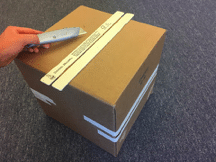
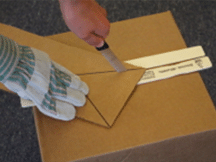
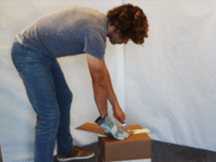
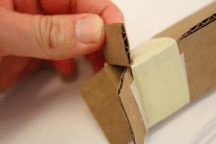
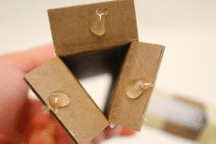
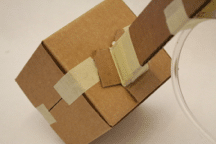

 Design a New Deep-Sea Fish
Design a New Deep-Sea Fish 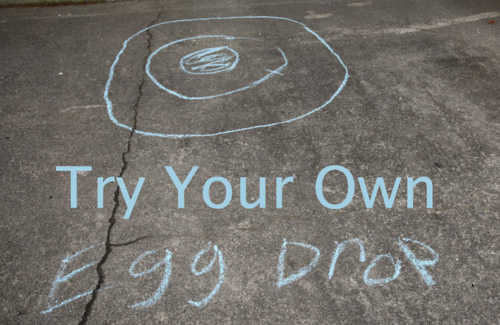 DIY Physics Lesson: Try to Drop an Egg Without Cracking It
DIY Physics Lesson: Try to Drop an Egg Without Cracking It 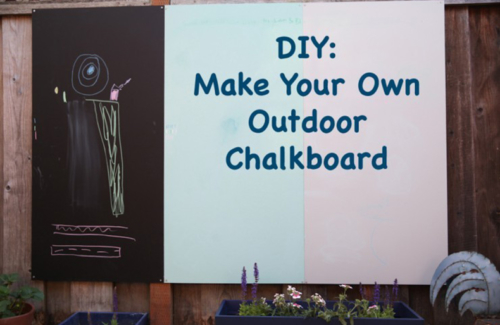 DIY: Easy Instructions to Make Your Own Outdoor Chalkboard
DIY: Easy Instructions to Make Your Own Outdoor Chalkboard 